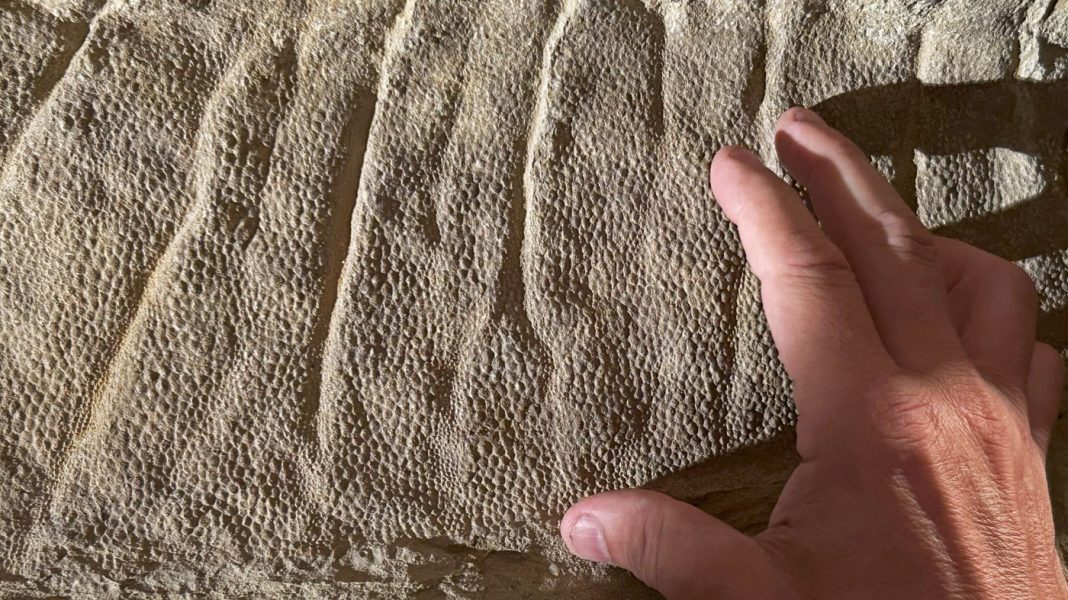The world of paleontology is often imagined as a realm of dusty dig sites, complex technical equipment, and highly specialized scientists. And while that’s largely true, every so often, a breakthrough emerges from the most unexpected of places, championed by an equally unexpected hero. This is precisely what happened when researchers grappled with an enduring enigma surrounding a rare dinosaur mummy. Their quest to decode its ancient secrets received an invaluable boost from none other than a great-grandmother, proving that insight can come from anywhere, and from anyone.
The Dinosaur Mummy’s Puzzling Patterns
For years, a remarkably preserved dinosaur mummy, a type of hadrosaur, had captivated scientists. Unlike most fossil finds, this specimen boasted extensive fossilized skin, offering an unprecedented glimpse into the creature’s appearance in life. However, certain patterns and textures on its epidermal surface presented a significant puzzle. These intricate formations weren’t typical skin impressions; they were subtle, repeating motifs that seemed to hint at something more profound than mere wrinkles or scale arrangements. Researchers meticulously studied these patterns, hypothesizing everything from unique scale structures to post-mortem environmental alterations, but a definitive explanation remained elusive. The subtle variations challenged conventional paleontological interpretation, leaving a critical piece of the dinosaur’s biological story untold.
An Unconventional Expert Steps In
Enter Evelyn, a great-grandmother with a lifelong passion for intricate textile arts, particularly quilting and embroidery. Her involvement was purely serendipitous. Her granddaughter, a junior researcher on the project, had shown Evelyn some high-resolution images of the dinosaur mummy’s skin, perhaps out of casual interest, not expecting any scientific contribution. But Evelyn, with decades of experience in recognizing and manipulating complex patterns in fabric, saw something in those images that the seasoned paleontologists had overlooked. Her eye, trained to understand how individual stitches and fabric pieces contribute to a larger, coherent design, immediately picked up on a subtle organization that hinted at a dynamic process rather than a static structure.
Evelyn’s Insight: More Than Meets the Eye
Evelyn’s immediate observation was that the patterns on the dinosaur’s skin bore a striking resemblance to the stress lines and tension points she often encountered in large, stretched textiles. She explained that while individual elements might seem irregular, their overall arrangement revealed a system of underlying structural support or movement. When applied to the dinosaur, this suggested that the patterns weren’t just decorative or random; they were a record of how the skin stretched and contracted over powerful muscles and skeletal movements. Her theory proposed that what looked like peculiar markings were actually specialized zones of epidermal flexibility and reinforcement, crucial for a large, active animal. “Her keen eye brought a perspective we simply hadn’t considered,” says Dr. Elena Petrova, a lead paleontologist on the project. “We were looking at static morphology, but Evelyn helped us see dynamic function through ancient patterns.”
This fresh perspective provided the critical spark. Researchers re-examined the mummy’s skin with Evelyn’s insights in mind, employing new imaging techniques and biomechanical models. They discovered that the patterns perfectly correlated with areas of hypothesized muscle attachment and movement, suggesting these were indeed specialized skin structures designed to withstand constant stretching and compression. This revelation changed their understanding of the dinosaur’s locomotion and lifestyle, painting a more accurate picture of how it moved and interacted with its environment.
The Enduring Lesson
Evelyn’s contribution is a powerful testament to the value of diverse perspectives in scientific inquiry. It highlights that breakthroughs don’t always demand advanced degrees or cutting-edge laboratories; sometimes, they just need a fresh pair of eyes and a unique, seemingly unrelated skillset. Her ability to translate a lifetime of textile expertise into a profound paleontological understanding underscores that knowledge is interconnected in fascinating ways. This great-grandmother’s accidental discovery not only helped unravel a dinosaur mummy mystery but also reaffirmed the boundless potential for human ingenuity, regardless of age or profession, to push the boundaries of scientific understanding.




